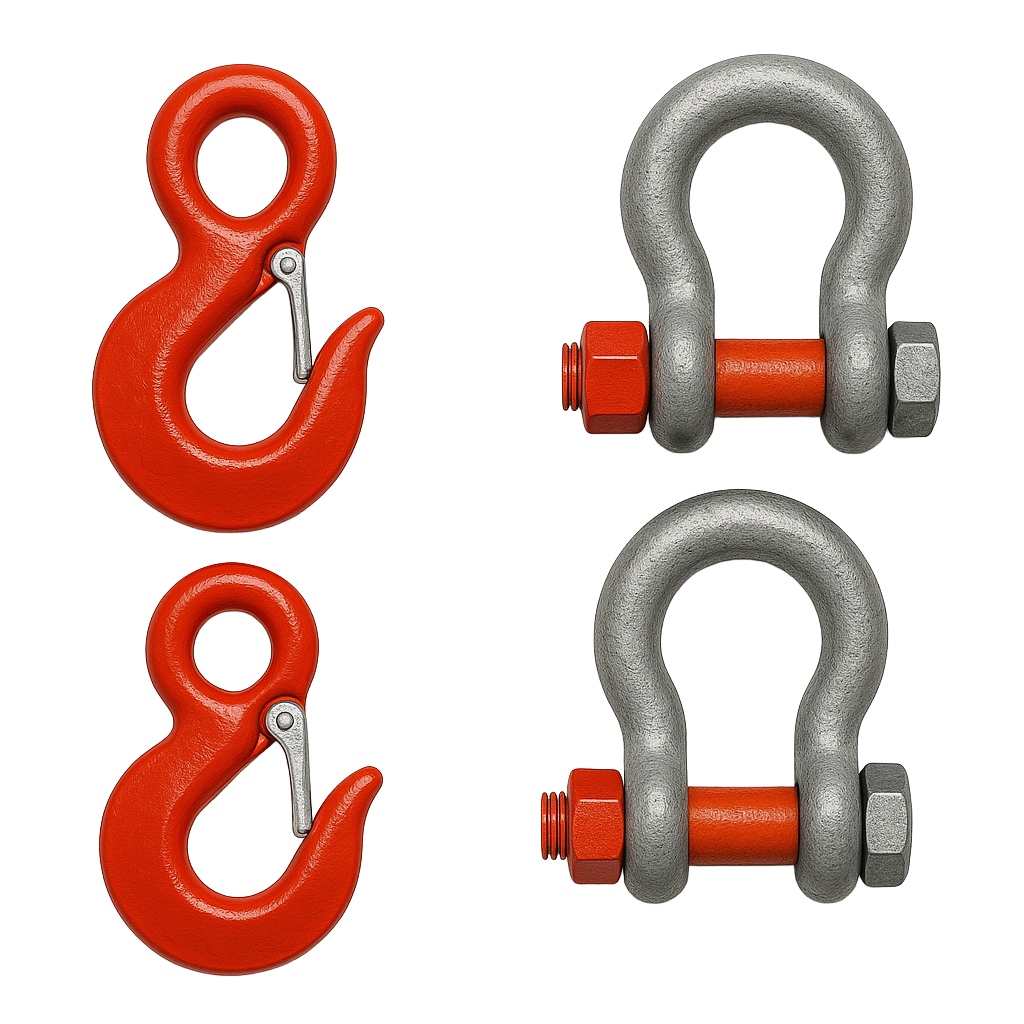High-Strength Lifting Hooks & Shackles

Critical Connections: Lifting Hooks & Shackles Explained
Lifting hooks and shackles are indispensable connecting components in virtually all rigging and lifting operations. Hooks provide a direct means of attachment to loads or lifting points, while shackles create strong, reliable links between slings, wire rope, chain, and other hardware.
Manufactured from high-grade alloy or carbon steel, these components are forged and heat-treated for optimal strength, toughness, and fatigue resistance, ensuring safety and performance under critical loads.
Our Range of Lifting Hooks & Shackle Configurations
We stock and supply a comprehensive lineup of lifting hooks and shackles, all built to meet rigorous industry specifications and application demands.
Eye Hooks
Versatile hooks with an eye for connection to slings. Available with or without safety latches for various applications.
Clevis Hooks
Designed with a clevis and pin for direct attachment to chain links or other fittings, ensuring a secure connection point.
Swivel Hooks
Allow for rotation under load, helping to prevent twisting of the lifting sling and improve load positioning.
Self-Locking Hooks
Enhance safety by automatically locking when a load is engaged, preventing accidental release during lifting operations.
Anchor Shackles (Bow Shackles)
Feature a rounded "O" shape (bow) providing a larger area for connecting multiple sling legs or for accommodating angular loads.
Chain Shackles (Dee Shackles)
Designed with a "D" shape, ideal for in-line connections with single-leg slings or chains where side-loading is minimal.
Why Our Wire Rope Stands Out
Our components are crafted with precision and tested for performance, giving you the confidence for safe and efficient lifting.
Certified Strength & Compliance
All lifting hooks and shackles are clearly marked with Working Load Limits and meet or exceed ASME B30.10 (hooks) and B30.26 (rigging hardware) standards.
Robust & Durable Construction
Forged from high-quality alloy or carbon steel and heat-treated for superior toughness and fatigue resistance in demanding environments.
Wide Range of Options
From standard eye hooks to specialized self-locking hooks and various shackle types (anchor, chain, screw pin, bolt type) to suit any application.
Traceability & Identification
Properly marked with manufacturer's identification, WLL, and size for easy identification and compliance tracking.
Expert Rigging Support
Our experienced team can help you select the appropriate hooks and shackles to ensure safe and efficient lifting operations.